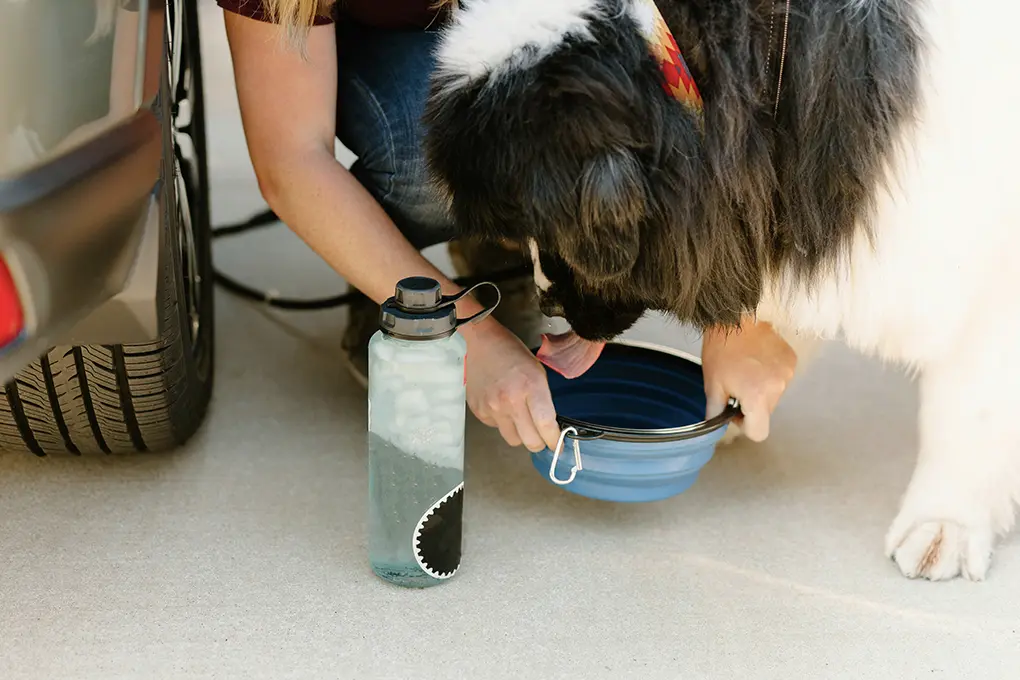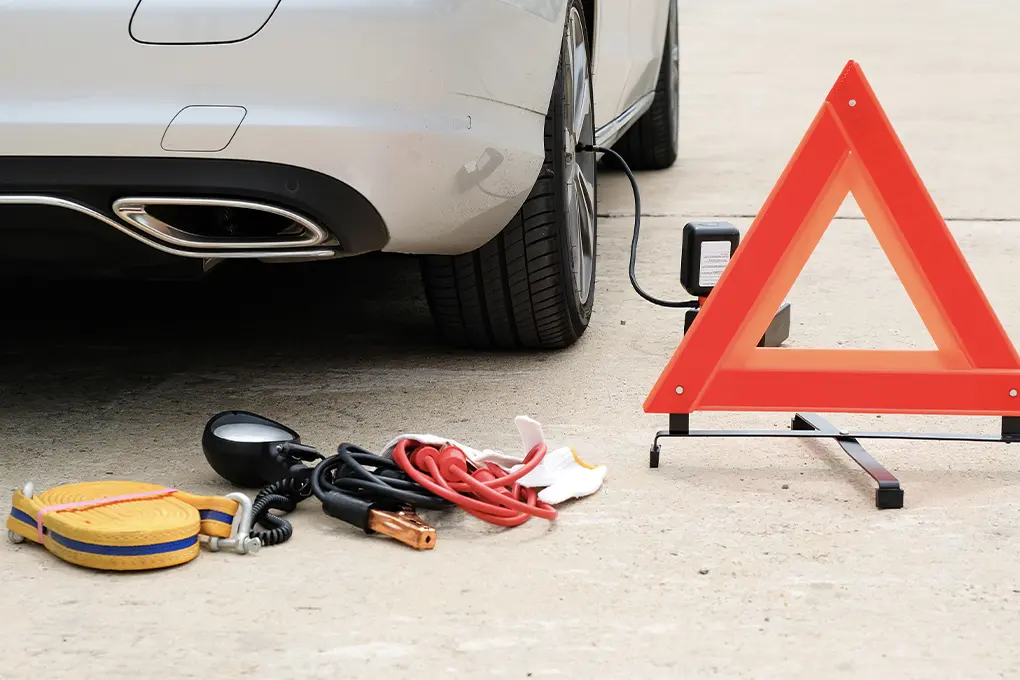When disaster hits, your pets are just as vulnerable as the rest of your family, often more so. Yet nearly 60% of American households with pets have no emergency plan that includes their animals. If you’re in that group, you’re not alone, but it’s time to fix that.
Each year, more than 100,000 animals are displaced or lost during disasters, according to the ASPCA. Many never find their way back home. That’s a heartbreaking reality, but it’s also preventable.
Building a solid pet emergency plan isn’t just a nice-to-have. It’s the best way to protect the animals who rely on you for everything. In this guide, we’ll walk you through exactly what to do, so you’re ready to keep your pets safe, calm, and by your side when it matters most.
Let’s help you put together a pet emergency kit so you can feel comfortable with your disaster preparedness for pets efforts.
Contents
- Key Takeaways
- Why Pet Emergency Planning Matters
- Understanding the Unique Needs of Pets in Emergencies
- Essential Components of a Pet Emergency Plan
- Preparing for Specific Disasters with Pets
- After the Disaster: Pet Recovery & Care
- Special Considerations for Different Pets
- Planning for the Unexpected: Creating a Complete Pet Disaster Plan
- Connecting with Your Community
- Final Thoughts on Disaster Preparedness for Pets
- Frequently Asked Questions
Key Takeaways
- Most pet owners are not prepared for natural disasters, leaving animals at high risk during emergencies.
- Pets face unique dangers such as separation, stress, and lack of shelter access during disasters.
- A pet emergency kit should include food, water, medical records, comfort items, and sanitation supplies.
- Evacuation plans must account for pet-friendly shelters, backup caregivers, and carrier training.
- Species-specific risks require tailored plans for dogs, cats, birds, reptiles, and small mammals.
- Post-disaster care includes health checks, behavior monitoring, and reunification strategies.
- Explore Batten’s emergency planning guides and vetted products to start building your complete pet disaster kit today.
Why Pet Emergency Planning Matters
Natural disasters impact every member of your household, including the ones with paws, feathers, or scales.
When Hurricane Katrina hit in 2005, an estimated 250,000 pets were left behind during evacuations, and thousands were never reunited with their families. That tragedy spurred the creation of the PETS Act, which now requires states seeking FEMA support to include pets in their emergency plans.
Still, it’s up to individual families to act. Roughly 90.5 million American households have pets, but a recent survey revealed that 91% of owners aren’t ready for the next natural disaster. That lack of preparation leaves millions of animals at risk.
Pet safety is almost always an afterthought. People wouldn’t think twice about protecting their kids, but many haven’t considered how to evacuate with their pets or keep them safe during long outages. A solid plan changes that.
Want to learn more about creating comprehensive family emergency plans? Check out Batten Emergency’s family disaster planning guide for step-by-step instructions on preparing your entire household.
Understanding the Unique Needs of Pets in Emergencies
Pets don’t process emergencies the way we do. When routines fall apart and stress levels rise, they can become anxious, disoriented, or even aggressive. Loud noises, unfamiliar environments, and sudden changes often trigger fear-based reactions like hiding, escaping, or panicking.
Disasters bring specific risks for animals. Separation from their owners is one of the leading causes of pet casualties. Once lost, many pets struggle to find their way home.
Another challenge is access to shelter. Only 56% of emergency shelters accept pets, meaning many families may be forced to leave animals behind or risk their own safety by staying together in unsafe conditions. Pets also need their own supplies, including food, water, and medication, items that can be hard to find during a crisis.
Recognizing these unique needs is the first step to protecting your pets when emergencies strike.
| Pet Type | Primary Disaster Risks | Special Considerations |
| Dogs | Anxiety-driven escapes, injuries from debris | Need exercise space, familiar scents to reduce stress |
| Cats | Hiding in unsafe areas, refusal to enter carriers | Require secure carriers, quiet spaces away from commotion |
| Birds | Respiratory sensitivity to smoke/chemicals, temperature vulnerability | Need protected air quality, stable temperature |
| Small Mammals | Temperature extremes, noise-induced stress | Require extra bedding, hiding boxes for security |
| Reptiles | Critical temperature requirements, dehydration | Need portable heat/cooling solutions, specialized habitat |
Understanding these challenges helps explain why advance planning is so important. Your emergency preparations must account for your pet’s specific needs, from medication requirements to comfort items that reduce stress. The Batten Emergency Kit Builder can help you customize preparations for your specific pet situation.
Essential Components of a Pet Emergency Plan
Protecting your pets during a crisis starts with a clear plan. A strong pet emergency plan should cover supplies, transportation, identification, shelter, and contingencies for when you are not home. The following subheadings outline each critical component.
Pet Emergency Kit Essentials
Pets need a dedicated go-bag stocked with everything they might need for at least seven days. According to the American Veterinary Medical Association, this includes food, water, medications, and comfort items.
- Food and Water: Use sealed containers for dry or canned food. Bring a can opener if needed. Plan for one gallon of water per day for medium dogs and one-quarter gallon for cats. Add collapsible bowls for easy feeding on the go.
- Medications and Records: Keep a two-week supply of medications, along with vaccination records, veterinary contacts, and recent photos stored in a waterproof pouch.
- Sanitation Supplies: Include waste bags, litter and scoop, puppy pads, paper towels, and cleaning products.
- Comfort and Restraint Items: Bring labeled carriers, leashes, familiar bedding, toys, grooming tools, and a pet-specific first aid kit with bandages, wipes, scissors, and towels.
Portability is key. Store your kit where it can be accessed quickly in an evacuation. Many pet owners forget prescriptions. Ask your vet about a rotating reserve and make sure it stays current.
Pet-Friendly Evacuation Planning
FEMA emphasizes including pets in your evacuation plans. Failing to prepare ahead can put animals at serious risk.
- Transport Readiness: Use carriers that are easy to access and large enough for movement. Practice placing your pet in the carrier to reduce stress. The American Kennel Club reports pets familiar with their crates experience far less stress during emergencies.
- Quick Access: Keep carriers near exits. Delays in finding them can be costly during fast evacuations.
- Evacuation Options: Prepare a list of:
- Pet-friendly hotels with phone numbers and policies
- Boarding facilities with emergency power
- Friends or relatives outside your area
- Local shelters that accept animals and their rules
- Backup Plan: Arrange for someone who can collect your pets if you are away. Provide access, emergency contacts, and written authorization for veterinary care.
When preparing for potential evacuation scenarios, be sure to review Batten Emergency’s evacuation strategy guide for comprehensive planning approaches. For specialized preparedness products that facilitate easier evacuations with pets, check out Batten’s emergency preparation products.
Pet Identification & Documentation
Identification greatly improves the chances of reuniting with a lost pet. The American Humane Association notes that pets with ID are nearly three times more likely to return home.
- Primary ID: Use a collar tag with your current phone number.
- Microchips: Make sure the microchip registration is current. Review annually.
- Emergency Tags: Use temporary tags during disasters with your evacuation contact info.
- Backup Tech: GPS trackers are useful for pets prone to running.
- Documentation Kit:
- Medical and vaccination records
- Proof of ownership and pet insurance
- Photos showing unique traits
- Emergency contacts for vets and boarding
Consider creating a waterproof “pet passport” with all key documents. These are fast to grab and reduce delays in emergencies.
For guidance on creating effective documentation systems for all your emergency needs, check out Batten’s guide on crisis communication clarity.
Pet-Friendly Sheltering Options
Although the PETS Act requires pet inclusion in disaster planning, actual shelter availability varies.
- Shelter Access: Contact your local emergency office in advance. Ask about co-located shelters where people and pets are housed nearby.
- Alternative Housing:
- Hotels within 50 to 100 miles that allow pets
- Boarding facilities with emergency protocols and climate control
- Temporary Housing Needs: Bring crates, barriers, and cleanup supplies. Include comfort items and maintain routines for feeding and walking.
During shelter stays, familiarity reduces stress. Familiar scents can greatly comfort your pet during stressful times.
Consider exploring Batten’s shelter-in-place protocol guide for additional information on creating secure temporary living spaces.
Preparing for Specific Disasters with Pets

Different emergencies require different preparations. Let’s look at how to prepare your pets for specific disaster scenarios that might affect your region.
Hurricanes & Storms
Hurricane season requires advance planning, especially in coastal areas where evacuations are common. The extra warning time before storms gives you a chance to prepare, but it also means pets may be displaced for longer.
Before hurricane season, update your pet’s ID, gather vaccination records, and plan evacuation routes. Identify pet-friendly accommodations farther inland and talk with friends or relatives who could house your pets. Stock your emergency kit with waterproofed supplies, and pre-register at pet-friendly hotels if possible.
When a storm approaches, never leave your pets behind. A study from the Louisiana ASPCA found that fewer than 10% of pets left during hurricanes were reunited with their owners. Bring outdoor animals inside and keep carriers by the door. Add temporary ID tags with your evacuation contact details and prepare familiar items to reduce anxiety.
| Before Hurricane Season | When a Storm Threatens | During Evacuation |
| Update all pet identification | Never leave pets behind if evacuating | Keep pet carriers ventilated but secure |
| Research inland evacuation routes | Evacuate early with multiple pets | Maintain routine feeding schedules if possible |
| Arrange with inland friends/family | Secure outdoor animals inside | Monitor for stress behaviors |
| Stock waterproof pet emergency kit | Place carriers near exit doors | Keep pets leashed/contained at all times |
| Pre-register at pet-friendly hotels | Add temporary ID tags with evacuation info | Provide familiar items to reduce anxiety |
The Batten hurricane defense guide provides excellent information on preparing your entire household, including pets, for storm threats. For additional hurricane preparation guidance, review Batten’s guide on preparing apartments for hurricanes.
Wildfires
In wildfire-prone regions, speed is everything. Fires spread fast and unpredictably, so readiness is essential.
Keep carriers near exits throughout fire season. Install window decals noting the number and type of pets to help first responders. Use shorter leashes and smoke-safe carriers. Practice quick evacuations so pets are more cooperative during real emergencies.
At the first sign of smoke, bring outdoor pets inside. If you must pass through smoky areas, cover carriers with damp towels. Never return for pets once officials issue evacuation orders. Instead, notify responders about your animals’ location and typical hiding spots.
A “pet buddy system” is especially useful during wildfires. Many families in California partner with neighbors to evacuate each other’s pets if someone isn’t home. It has saved lives during fast-moving fire events.
For more information on wildfire preparation, check Batten’s wildfire evacuation plan guide.
Earthquakes
Earthquakes come without warning, so your pet prep must be in place before anything happens.
Secure bookshelves, appliances, and other items that could fall.
Many earthquake-related pet injuries are caused by falling objects. Place emergency kits in accessible areas of your home. Use baby gates to contain pets in safer zones, away from windows and unstable furniture.
After a quake, check for injuries cautiously as animals may lash out when scared. Inspect your home for broken glass, loose wiring, or chemical spills before letting pets roam. Be ready for aftershocks, which can further disorient them. Watch for stress signs like hiding, vocalizing, or aggression.
For comprehensive earthquake preparation information, review Batten’s earthquake gas leak safety guide.
Home Emergencies (Fire, Gas Leak, etc.)
Fires, gas leaks, and other household incidents often require immediate action. Every second counts, and preparation is your best defense.
Place pet rescue alert stickers on windows and doors showing the number and type of animals inside. According to RedRover, these stickers greatly improve pet rescue success. Keep leashes and carriers by the exit, and practice evacuation drills that include pets. Install pet-monitored smoke alarms that send alerts to your phone when you’re away.
If a fire breaks out and you can’t find a hiding pet, never delay evacuation. Leave doors open so pets have a chance to escape. Tell firefighters where your pets are likely hiding. Arrange for a trusted neighbor to access your home if you’re not there.
Consider adding fire safety equipment to your home preparation plan to help prevent these emergencies from occurring
For more home safety preparation, check out Batten’s emergency fire prevention guide for
You might also want to check out Batten’s home escape plans guide for comprehensive evacuation planning that includes all family members.
After the Disaster: Pet Recovery & Care
Recovery after an emergency is often as difficult as the event itself. Pets may experience trauma, environmental hazards, or ongoing stress. A clear post-disaster plan supports both safety and stability during this time.
Physical Health and Safety Checks
Start by examining pets carefully for visible injuries or signs of distress. Heat exhaustion, dehydration, or hypothermia may occur depending on the conditions they experienced. Stress and sudden dietary changes can also lead to gastrointestinal issues.
The Animal Emergency and Referral Center of Minnesota estimates that a great deal of pets suffer digestive problems after displacement.
Continue any prescribed medication routines, even if circumstances are disrupted. For pets with chronic health needs, consistency is especially important. Maintain regular feeding times to help stabilize digestion and energy levels.
Property Inspection and Outdoor Hazards
Before allowing pets back outside, inspect the entire property. Look for broken fences, debris, hazardous chemicals, downed wires, or wild animals that may have entered the area. Be mindful that landmarks, smells, and routines may have changed, confusing pets and increasing the risk of escape.
According to Batten’s emergency recovery resources, it’s also important to check structures for weak points that could lead to further injury or loss. Block access to damaged zones and monitor your pet’s movements closely in unfamiliar surroundings.
Behavior and Emotional Readjustment
Many pets experience behavioral changes after disasters. Common symptoms include restlessness, withdrawal, vocalization, or aggression. Research published shows that many animals even develop PTSD following such events.
Maintain daily routines such as feeding and walks to support emotional recovery. Designate a quiet space with bedding and familiar toys. Natural calming aids may help reduce anxiety, and veterinary input should be sought if stress behaviors worsen or continue long term.
Reuniting Lost Pets
If a pet becomes lost during or after a disaster, immediate action increases the chance of a safe return. Contact local shelters, veterinary clinics, and animal control offices daily. According to the Three Retrievers Lost Pet Rescue, dawn and dusk are the best times to search, as pets are more active and less fearful.
Place items with familiar scents near home entrances and use community groups, social media, and printed flyers to reach neighbors. Posting in local online forums and using lost pet databases can also improve visibility. GPS tags and photo ID collars are helpful for quicker identification in post-disaster situations.
Many emergency supply kits now include tools for reunification such as ID tags, temporary fencing, and mobile alerts. These can make a significant difference in reducing pet loss during chaotic recoveries.
Special Considerations for Different Pets
Each species has specific needs during emergencies. The following sections outline how to prepare based on the type of pet in your care.
Dogs and Cats
Dogs and cats are common household pets but respond differently during emergencies. For dogs, keep spare leashes near exits and consider a dog backpack for small breeds. Muzzles should be included in emergency kits, even for calm dogs, as stress can trigger defensive behavior.
Familiar scent items can help reduce anxiety. Batten’s trail safety guide also includes pet-specific advice for those who hike regularly with dogs.
For cats, use hard-sided carriers that are secure and difficult to escape. Include disposable litter boxes or roasting pans and calming pheromone sprays, which a study published in Frontiers of Veterinary Science show reduced stress behaviors during transport. If carriers are unavailable, pillowcases can serve as a temporary emergency option approved by veterinarians.
Even typically calm pets may behave unpredictably under stress. Well-trained dogs may become aggressive, while independent cats may cling or attempt to flee. Anticipate behavior shifts and plan accordingly.
Small Animals
Rabbits, guinea pigs, and similar pets are particularly sensitive to temperature and stress. Use species-appropriate travel cages with secure closures and good airflow. Pack extra bedding for insulation, as small mammals can develop hypothermia quickly. Include hay, specialized food, and sipper bottles.
Provide hiding boxes for comfort. Research published found that access to shelters can reduce stress hormone levels.
Temperature regulation is critical. During winter outages, warm the area around carriers using hand warmers wrapped in towels, rotated regularly to prevent overheating. For more details on cold-weather preparation, see Batten’s freezing battery protection guide, which also covers portable heating options.
Birds
Birds are highly vulnerable to smoke, temperature swings, and unfamiliar noise. Use well-ventilated bird carriers designed for safe transport. Add carrier covers to block visual stressors and pack a spray bottle to maintain humidity levels during dry conditions.
Provide food suitable for each species, such as seeds, nectar, or chopped produce. Use heat sources in winter, like hand warmers placed outside the cage, ensuring they do not touch the bird directly. Position carriers away from sun and drafts.
Some bird owners use battery-operated fans to maintain airflow in warm climates without overcooling the enclosure. Batten’s heatwave illness prevention guide includes more advice for protecting birds in extreme heat.
Reptiles and Exotic Pets
Reptiles and exotics require the most advanced emergency planning due to their narrow environmental tolerances. Temperature changes of just 10°F can be fatal for some species, Use insulated containers like modified coolers for transport, with battery-operated temperature gauges and heat pads as needed.
Emergency Requirements by Species
| Reptile Type | Temperature Range | Humidity Needs | Transport Notes |
| Snake | 75-85°F (24-29°C) | 40-60% | Secure, ventilated container to prevent escape |
| Bearded Dragon | 75-85°F (24-29°C) | 30-40% | Include UVB light if transport exceeds 48 hours |
| Leopard Gecko | 75-80°F (24-27°C) | 30-40% | Use a heat pad on one side of container only |
| Turtle/Tortoise | 75-85°F (24-29°C) | 40-60% | Solid enclosure, shallow water if aquatic |
| Iguana | 85-90°F (29-32°C) | 70-90% | Large container with climbing space and high humidity |
Pack species-specific food, supplements, and lighting. For reptiles requiring UVB to metabolize calcium, bring portable light sources or plan to limit time away from setup. For insectivores, store feeder insects in escape-proof containers.
Batten’s off-grid living guide includes tips on maintaining portable equipment, many of which can be adapted to meet exotic pet needs during emergencies.
Planning for the Unexpected: Creating a Complete Pet Disaster Plan
A complete pet emergency plan should cover both routine and unpredictable scenarios. Taking a step-by-step approach helps you stay organized and ready when it matters most.
Build a Detailed Written Plan
Start by creating a written document that outlines all aspects of your pet emergency strategy. Include evacuation routes, nearby shelters or hotels that accept pets, contact information for veterinarians and emergency caregivers, medication details, feeding routines, and special instructions based on species or medical needs.
Add reunification steps if pets become separated. Batten’s emergency pet evacuation strategy guide offers templates to help you stay organized.
Practice Evacuation Drills Regularly
Run drills with your pets several times a year. Time how long it takes to gather animals and supplies, and practice loading carriers and vehicles under various conditions. A University of California study found that pets familiar with drills showed 48% less stress during actual evacuations. Make sure every family member knows their specific responsibilities.
Update Your Plan Twice Per Year
Check and refresh your plan every six months. Replace expired food, medications, and water supplies. Update medical information after vet visits. Adjust plans as pets age or develop new health conditions, especially if mobility or behavior changes.
Share the Plan With Others
Ensure others know where your plan is stored. Keep both physical and digital copies accessible to family members, pet sitters, or neighbors. Store photos, records, and care instructions in the cloud and on a wallet-sized card for quick reference. Batten’s emergency communication solutions can help maintain contact during outages or evacuations.
Connecting with Your Community
Individual planning is important, but having community support can be just as valuable in an emergency.
Build a Local Support Network
Coordinate with neighbors who own pets. Mutual agreements to check on or evacuate each other’s animals can prevent loss if someone isn’t home.
Know Your Local Animal Response Resources
Identify shelters that accept pets, veterinary clinics that remain open during emergencies, and animal response teams that may assist in disasters. Follow local animal shelters on social media to receive real-time updates about available services, supplies, or lost-and-found efforts. The Batten Emergency neighborhood emergency network guide provides excellent information on building community resilience that benefits both humans and animals.
Strengthen Your Emergency Skills
Take advantage of pet-specific training courses. Pet first aid and CPR classes from organizations like the American Red Cross teach essential techniques that may save lives. Attend local preparedness events that include pet safety information, and consider joining or supporting your Community Emergency Response Team (CERT), especially if it includes animal response capabilities.
Final Thoughts on Disaster Preparedness for Pets
Disasters are unpredictable, but your response doesn’t have to be. With a well-organized emergency plan, your pets can stay safe, calm, and accounted for, no matter what unfolds. From wildfire evacuations to home gas leaks, the steps you take now will determine how well your pets cope in a crisis.
This guide covered everything from emergency kits and evacuation strategies to species-specific needs and post-disaster recovery. Planning is about routines, identification, communication, and community. Every detail you address today reduces risk tomorrow.
As your family changes, update your strategy. The more often you practice, the more confident you and your pets will be. Emergency preparedness is a commitment, not a checklist.
Want to make sure your furry family members are protected during emergencies? Explore Batten’s emergency preparation products for expert-vetted solutions that keep your entire household safe when disasters strike.
Frequently Asked Questions
What Is the PETS Act and How Does It Help Pet Owners?
The PETS Act requires states seeking FEMA disaster assistance to include pets in their emergency planning. It ensures shelters consider pets during evacuations, but families must still plan individually.
How Often Should I Update My Pet’s Emergency Plan?
You should review and update your emergency plan every six months. Update after vet visits, and replace expired supplies like food, water, and medications to ensure readiness.
Can Emotional Support Animals Stay With Owners During Evacuations?
Some emergency shelters make exceptions for emotional support animals, but policies vary by region. Contact local emergency services in advance to understand your options and prepare documentation.
Are There GPS Devices That Work Without Wi-Fi For Pets?
Yes, several pet GPS trackers use cellular networks or radio signals rather than Wi-Fi. These are useful during disasters when internet connectivity may be unavailable or unreliable.
How Can I Help Other Pet Owners During a Disaster?
Form neighborhood mutual aid groups, share evacuation plans, and volunteer with local animal response teams. Your preparation can make a real difference for pets whose owners are unable to act quickly.
Sources
- New ASPCA Survey Reveals 83 Percent of Pet Owners Live in an Area Impacted by Disasters, Yet Less Than Half Have a Preparedness Plan in Place | ASPCA
- ASPCA Survey Shows 83% of Pet Owners Are Impacted by Disasters, Fewer Than Half Have Preparedness Plans | ASPCApro
- The #1 Reason Pets Are Left Behind During Disasters—And How to Avoid It – Rocky Kanaka
- PETS Act (FAQ) | American Veterinary Medical Association
- Be prepared for when disaster strikes
- Pets in Evacuation Centers | Healthy Pets, Healthy People | CDC
- Prepare Your Pets for Disasters | Ready.gov
- Crate Training Benefits: Why a Crate Is Great For You and Your Dog
- Attention Pet Owners, It’s National Pet ID Week! – American Humane Society
- Animal Rescue Facts – Louisiana SPCA
- 10 Steps to Keep Your Pets Safe During an Earthquake
- Emergency Planning Saves Pets’ Lives – RedRover
- Food Bloat in Pets: What Pet Owners Need to Know
- Veterinary Partner – VIN
- Guide to Finding Lost Dogs
- Frontiers | A long-lasting gel-based diffuser of feline pheromone can help reduce undesirable behaviors in cats at home: comparison with an electric diffuser
- (PDF) Will a hiding box provide stress reduction for shelter cats




